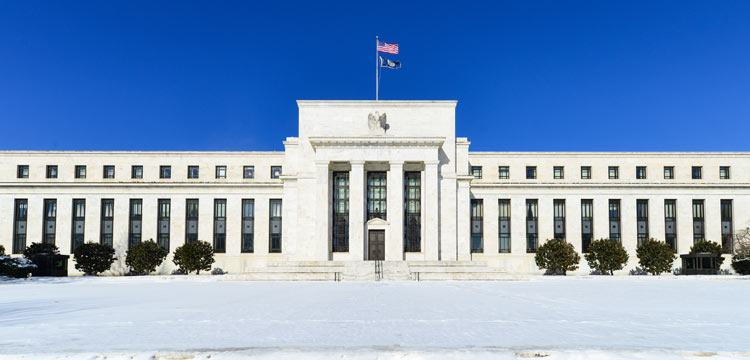The minutes of the Federal Reserve’s May policy meeting that were released on Wednesday indicated that the US central bank remained on track for more rate increases this year. Most FOMC members thought it was appropriate to hike soon.
This was interpreted as meaning a move by the Fed could come as early as the June policy meeting. While this should be positive for the dollar, the market reaction was to sell off the greenback and US Treasury yields fell immediately after the FOMC minutes.
One reason was that the market saw the tone of the minutes as being quite cautious, since Fed policymakers said it was prudent to wait for more evidence that the recent slowdown in the US economy was transitory. As such, investors questioned the true potential for two additional rate hikes this year. The recent batch of weaker data heightened caution over policy tightening. Most of the FOMC voters shared the view that more solid data was required to strengthen their expectation that US economic growth will rebound. GDP slowed sharply in the first quarter along with consumer spending, and a measure of underlying price gains also fell further below the Fed’s 2% inflation target. However, the Fed chose to look past this first quarter weakness as it indicated in its May 3 meeting, and signaled it remains on track for a June rate hike.
The Fed also discussed winding down its $4.5 trillion balance sheet. The minutes suggested that a balance sheet reduction in late 2017 is likely and could be done by ending reinvestments of maturing securities. This should have been bad news for long term debt and should have led to a drop in prices of US Treasuries and a rise in yields but instead the opposite happened. One interpretation was that the market saw the Fed’s pace of normalizing the balance sheet size as slower than they anticipated. The FOMC discussed a proposal that would cap the run-off of bond holdings, with the cap raised at three-month intervals, implying a very gradual tapering process.
The next rate hike from the Fed will likely come at the June 14 meeting. If the data come in strong thereafter, the Fed will look past this quarter of economic weakness, and should second quarter growth improve, another rate hike could come in September, followed by a balance sheet reduction sometime in the fourth quarter.
The minutes indicated that there was no change in the Fed’s forward guidance. Investors are pricing in around an 80% probability of a hike in June. Philadelphia Fed President Patrick Harker said this week that a June hike “is a distinct possibility”. Meanwhile the Fed Funds Futures (which track investors’ expectations for rate rises) imply a 46% chance of two more hikes by the year-end.
The slightly lower chance of a further rate increase after June is also due to other factors outside the Fed, such as increased uncertainty related to US President Trump’s economic agenda. But the Fed is likely to base its rate outlook on hard data such as employment growth and it sees the underlying momentum in the US economy as remaining solid.
The US economy is expected to accelerate after the unusually weak first quarter. Economists expect the economy to pick up this spring after expanding at a weak 0.7% annualized rate from January through March. Forecasts call for an annualized growth rate of about 3% in the second quarter.
Labour market strength supports the view that an abrupt slowdown in economic growth in the first quarter was probably temporary. The non-farm payrolls report is due next week and is forecast to show a respectable 183k increase in jobs and a 0.2% rise in hourly earnings. This would be encouraging for the Fed to raise rates next month.
The outlook for the US dollar is generally positive in an environment where the Fed is hiking rates. The Fed’s policy path of higher rates is supportive of the broader trend of dollar strength. Meanwhile, gold prices, which are sensitive to US interest rates, will likely be impacted negatively by rate rises. This is one reason why gold has been pinned below $1,300 an ounce in recent months.

Forex trading and trading in other leveraged products involves a significant level of risk and is not suitable for all investors.
Recommended Content
Editors’ Picks
EUR/USD clings to daily gains above 1.0650

EUR/USD gained traction and turned positive on the day above 1.0650. The improvement seen in risk mood following the earlier flight to safety weighs on the US Dollar ahead of the weekend and helps the pair push higher.
GBP/USD recovers toward 1.2450 after UK Retail Sales data

GBP/USD reversed its direction and advanced to the 1.2450 area after touching a fresh multi-month low below 1.2400 in the Asian session. The positive shift seen in risk mood on easing fears over a deepening Iran-Israel conflict supports the pair.
Gold holds steady at around $2,380 following earlier spike

Gold stabilized near $2,380 after spiking above $2,400 with the immediate reaction to reports of Israel striking Iran. Meanwhile, the pullback seen in the US Treasury bond yields helps XAU/USD hold its ground.
Bitcoin Weekly Forecast: BTC post-halving rally could be partially priced in Premium

Bitcoin price shows no signs of directional bias while it holds above $60,000. The fourth BTC halving is partially priced in, according to Deutsche Bank’s research.
Week ahead – US GDP and BoJ decision on top of next week’s agenda

US GDP, core PCE and PMIs the next tests for the Dollar. Investors await BoJ for guidance about next rate hike. EU and UK PMIs, as well as Australian CPIs also on tap.